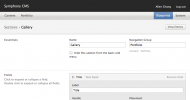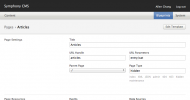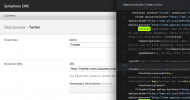The Right Stuff
Symphony's features strike a perfect balance: the power to do everything you need, the intelligence to do only what you need.
Browse Features
Open Architecture
Symphony doesn’t tell you what kind of content to manage, or how. It doesn’t lock you into a rigid structure or dictate some silly URL schema. It just gives you the tools and stays out of your way. Trust us, you’ll like it.
-
Model your own content
No more hacking. Symphony lets you define the structure of your content from the ground up, meaning your system is custom-built to handle exactly the content you need to manage. It also means you can develop rich, interconnected functionalities between your content, assets, and users.
-
Granular Building Blocks
There are no custom fields when every field is custom. In Symphony, you build your content types from scratch, one field at a time. You create data sources that fetch only the entries you want, and output only the fields you need. Symphony gives you fine-grained control over every aspect of your project, beginning with the most basic pieces.
-
XML-based data engine
Symphony’s native use of XML allows developers to take advantage of the wealth of XML technologies already available on the web. Want to pull your Twitter feed and mash it up with your entries? Need to integrate with other systems that have XML-based APIs? How about creating a dynamic Flash site using XML? Symphony can do all this, and more, without batting an eyelash.
-
Define your own URL schema
Create clean and flexible URL structures that are not only search engine friendly but give you a truly dynamic front end. With URL parameters, one page can power an entire browsing interface, with filtering, pagination, and other values set on-the-fly in the URL. With Symphony, your interface designs can dictate how you want the system to behave, not the other way around.
-
Designed to be extended
Symphony’s core is designed to allow extension developers to easily access and manipulate system processes on both the front end and the back end. The proof is in our ever-growing library of extensions.


